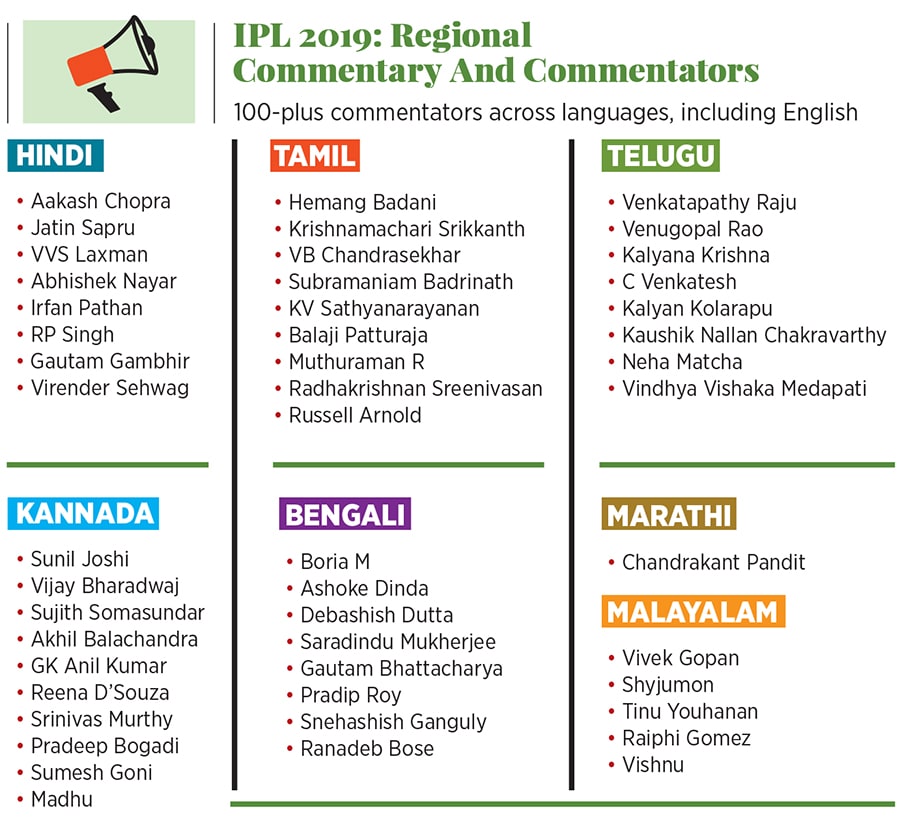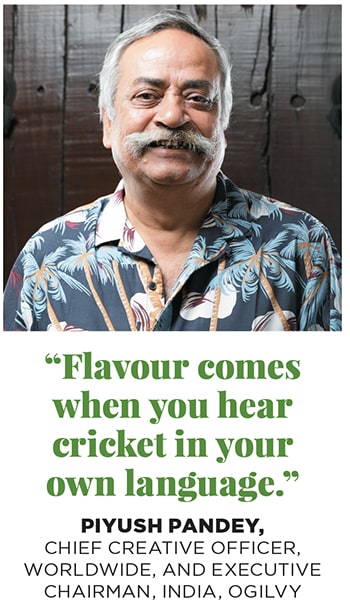When West Indian fast bowler Andy Roberts was trapped leg before wicket by Indian skipper Kapil Dev on June 25, 1983, Kumar (who goes only by his first name) knew he was witnessing history. It was the ninth West Indian wicket to fall and India needed just one more scalp to register an improbable and maiden cricket World Cup win. Suddenly, the television went on the blink. &ldquoDoordarshan lost its signal from London,&rdquo recalls Kumar, who was then 20 years old. The farmer watched the finals at his friend&rsquos house in Madavoorpara, a sleepy hamlet, roughly 10 km from Kerala&rsquos capital, Thiruvananthapuram.
&ldquoThe commentary was not in Malayalam,&rdquo rues Kumar. &ldquoI could only see the game. Hindi and English still remain alien languages... Kapil was God,&rdquo gushes Kumar in his mother tongue.
Fast forward to April 2019. A lot has changed in God&rsquos Own Country. Kumar, now 56 and with a new God in Virat Kohli, is glued to his TV set in his tiny home. His wife Usha Kumar, 48, is watching the Indian Premier League (IPL) for the first time, along with their son and daughter-in-law. An IPL promo starts on Star Sports. A bunch of young children, dressed in bright coloured T-shirts of different teams, are busy forming two teams. &ldquoCaptains, team undaakkoo (Captains, form the team),&rdquo one of them shouts. The process begins, as each of them&mdashnamed after their favourite cricketer&mdashjoins one of the teams. A boy, donning the jersey of Royal Challengers Bangalore, refuses to be called Kohli. &ldquoEnikyu Murgesh Sathyamurthy aavanam (I will be Murgesh Sathyamurthy),&rdquo he says while introducing himself. Suddenly, Kohli enters the scene and starts talking in Malayalam. Kumar, on the edge of a rickety wooden chair, exults like a child. &ldquoGame unndakkum name (The game will make your name).&rdquo His family bursts into laughter.
Though the promo is dubbed in Malayalam&mdashOmkar Patwardhan was the name of the child who refuses to play Kohli in the original Hindi commercial&mdashKumar watches the IPL with Malayalam commentary every Sunday. &ldquoEarlier I could only see the game. Now I can feel it,&rdquo he smiles.
![g_115745_ipl_final_2_280x210.jpg g_115745_ipl_final_2_280x210.jpg]()
In a first, the IPL is being beamed live with Malayalam commentary over weekends. Star India, which bought the IPL broadcast rights for five years starting 2018 for a staggering ₹16,347 crore, is also experimenting with Marathi commentary for the first time. Kumar, for his part, enjoys commentary by Tinu Youhanan, the first player from Kerala to play for India. &ldquoHe is the son of the soil.&rdquo
Of The People...
Meanwhile, at Urmi Estate in Lower Parel, Mumbai, the corporate headquarters of Star, Gautam Thakar, chief executive officer of Star Sports, is elated. Star&rsquos gambit to take IPL deeper into the hinterland with regional commentary in seven languages seems to have paid off. Total viewership during the first four weeks of the six-week T20 extravaganza stood at 411 million total viewership last season was 414 million. Growth in viewership in women, men and children over the last year stood at 15 percent, 13 percent and 29 percent, respectively.
Thakar, like a seasoned commentator giving a pitch report prior to a match, decodes the regional commentary move. Different consumers, he explains, have different preferences. &ldquoOur job is to give you whatever language you are most comfortable with,&rdquo he contends. Last IPL, Star experimented with multiple languages. Though there was a dedicated Tamil channel, Telugu, Kannada and Bengali found themselves sandwiched among movie channels. &ldquoThis meant we had only a four-hour slot, which was a little before the game, the match itself and a little after,&rdquo he says.
This year, though, the IPL is radically different. In a first, there are dedicated Telugu, Kannada and Bangla sports channels for matches. This means, Thakar explains, 24x7 programming. And for the IPL, it takes a different meaning. Leading up to every game, there are highlights, post-show talks, interviews, franchise shows, and finally the live game. There are over 100 commentators in eight languages, including English. &ldquoIt creates an aura, builds up fan engagement, boosts affinity, makes people excited about the game and drives overall consumption,&rdquo he says.
![g_115741_gautamthakur_o2a4000_280x210.jpg g_115741_gautamthakur_o2a4000_280x210.jpg]() Gautam Thakar, chief executive officer of Star Sports
Gautam Thakar, chief executive officer of Star Sports
Image: Mexy Xavier
The success of the regional strategy became evident last year. In 2018, about 80 percent viewers in Tamil Nadu consumed the game in Tamil. &ldquoImagine that language didn&rsquot even exist the previous year,&rdquo exclaims Thakar. &ldquoThis just tells you something about how people are reacting,&rdquo he says, adding that he was not surprised with the result as it was expected in a country with so many languages.
![g_115749_ipl_final_4_280x210.jpg g_115749_ipl_final_4_280x210.jpg]()
Cut to Panhala in Kolhapur district of Maharashtra. If there is commentary in Marathi, reckons Mangesh Desai, a grocery shop owner, why would anybody listen to Hindi. &ldquoIsn&rsquot it common sense that you would talk and listen in your mother tongue?&rdquo he asks. Desai, 35, is an ardent fan of the IPL and this season he decided to throw a small party whenever there is a Mumbai Indians match on a Sunday. &ldquoI enjoy it with my friends.&rdquo What Desai probably doesn&rsquot know is that Star is mulling to launch a Marathi sports channel before the start of the cricket World Cup in May.
Feel The Game
Piyush Pandey, the celebrated adman who put India on the global advertising map with his memorable commercials laced with Hindi, explains how talking in the first language makes an emotional connect. &ldquoI have always believed that people must feel your communication and not just hear it,&rdquo says the former Ranji cricketer who was recently elevated as global chief creative officer of Ogilvy, a first for an Indian. Though the &lsquocolonial&rsquo game was Indianised a long time back, Pandey traces the seeds of regionalistion of IPL when it started in 2008.
The campaign, made by Ogilvy, was titled Karmayudh. &lsquoNa deshyudh, na dharmayudh, yeh hai dharti par karmayudh (This is neither a war of nations, nor is it a war of religions, but this is a fight of performance)&rsquo was the voice-over.
Complimenting Star for adding more languages, Pandey contends the broadcaster has taken the game to another level. &ldquoFlavour comes when you hear cricket in your own language,&rdquo he says, dishing out a personal example. There are two TV sets at Pandey&rsquos home: One on which he watches cricket in English feed and the second for his cook and driver who are hooked to Hindi commentary.
![g_115747_ipl_final_3_280x210.jpg g_115747_ipl_final_3_280x210.jpg]()
Pandey explains the magic of colloquial language by sharing an interesting anecdote. During his playing days in Jaipur, Pandey used to notice a Sikh boy sitting under a tree and doing commentary for himself during matches. &ldquoWe all thought him to be mad,&rdquo he recalls. Later on, Pandey discovered that the &lsquomad boy&rsquo happened to be the son of famous sports commentator, the late Jasdev Singh. The legendary commentator had instructed his son to practice commentary in Hindi.
Jatin Sapru, sports anchor and commentator, typifies somebody who is equally comfortable in English but opts to do commentary in Hindi. &ldquoThe real fun is commentating in Hindi,&rdquo he says. Recently he got a message from a youngster who confessed that he enjoyed watching IPL in Hindi, but it came with its own share of blues. &ldquoPapa kehte hain ki phir English medium main padne ka kya fayda hai (my father taunts me by asking what&rsquos the point of studying in an English medium school then)?&rdquo Sapru replied to the boy in his typical jovial style by tweaking a dialogue from the 1975 Hindi blockbuster Sholay. &ldquoKahin tumhare papa angrezon ke zamane ke jailor to nahin hai (Is your father a jailor from the British era)?&rdquo &ldquoPeople need to take a lot of pride in talking in their own language,&rdquo he says.
Regional Makes A Splash
The viewership share by language of the last IPL makes it clear that people are taking immense pride in watching the tournament in their native language. While Hindi dominated with 55 percent share, regional-language telecast (23 percent) was on a par with that of English (22 percent), according to data by Broadcast Audience Research Council India (Barc). As TV penetrates further into semi-urban and rural areas, and TV ownership grows at a faster clip, consumption of IPL in regional languages is likely to show a continued upward trend, Barc said in its report last year. This opportunity, the report added, will not be missed by brands looking to target emerging markets as well as those focusing on local markets. &ldquoBroadcasts in more regional languages will further aid this process,&rdquo Barc emphasised.
Adding more zing to IPL is the fact that former cricketers are taking up commentary in regional languages. &ldquoRegional commentaries are now driven by superstars,&rdquo says Abhishek Dubey, sports writer and columnist. Krishnamachari Srikkanth, former India captain and ex-chief national selector, is now driving Tamil commentary.
![g_115751_ipl_final_5_280x210.jpg g_115751_ipl_final_5_280x210.jpg]()
What also helps regional commentators in striking a deeper emotional bond with the viewers is that local language gives enough room for playing with words in a harmlessly mischievous manner. Punning too sounds natural, and cool. Take, for instance, when the likes of Virender Sehwag and Ashish Nehra talk about the performance of Kolkata Knight Riders&rsquo Andre Russell in Hindi. &ldquoRussell ne bowlers ko masal ke rakh diya, (Russell has hammered the bowlers),&rdquo is how the brute battling display by the West Indian is described.
Regional language also entertains. And in a fast-paced format like T20, entertainment has to be the core. For Laxman Sivaramakrishnan, the former leg spinner, commentating in regional language&mdashin his case Tamil&mdashadds entertainment to the game. &ldquoA little bit of humour helps make viewers laugh,&rdquo says Sivaramakrishnan, who has had experience in English commentary for 19 years but made his Tamil debut only last year. &ldquoI am thoroughly enjoying this because it brings out a different part of me,&rdquo he says, sharing how use of local slang spices up commentary. Take, for instance, the expression &lsquovada poche&rsquo, which is used when something is lost or missed which once appeared to be easily attainable. When a wicket falls at a critical time when a partnership is building up, the use of &lsquovada poche&rsquo is apt. &ldquoIt is a famous comedy line from the Tamil movie Vadivelu. Tamil people can easily relate to it,&rdquo he says.
It&rsquos Business, Silly
The bigger picture&mdashor plan&mdashbehind reaching out to more people in the hinterland through regional language commentary is not just about &lsquoIndianising&rsquo the game. Simply put, it&rsquos smart business sense. The T20 jamboree needs to be well-oiled, and it can be done only by bringing in more advertisers. Look at the numbers. Over the last three years, the number of advertised brands has leapfrogged from 138 to 247, a growth of 79 percent.
Contrasting 2017 numbers with last year explains the zeal with which Thakar has been pushing the regional juggernaut. While 74 advertisers and 135 brands hopped on the IPL bandwagon in 2017, the numbers vaulted to 123 and 247, respectively, last year. Having more dedicated regional sports channels for IPL means more opportunity for advertisers to reach out to a larger population. Forty-two percent advertisers opted to be present across 10-plus channels, according to Barc. While about 28 percent chose to advertise on a mix of 6-9 channels, the rest were present on five or less channels.
Thakar is candid about the intent of taking IPL deeper across the country. It allows to buy segments of the market, and build up franchises for the community and fans, he says. Meanwhile, Kumar in Madavoorpara, Kerala, is clear what the game means to him. &ldquoCricket is my game, and commentary is my language. That&rsquos it.&rdquo

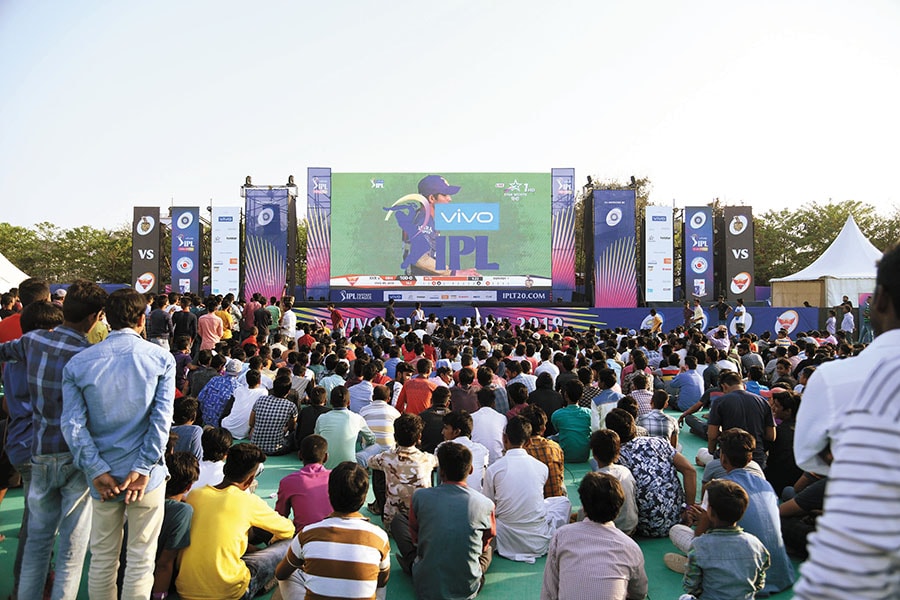 The concept of Fan Parks across the country and regional commentary have taken IPL to the remotest parts of the country
The concept of Fan Parks across the country and regional commentary have taken IPL to the remotest parts of the country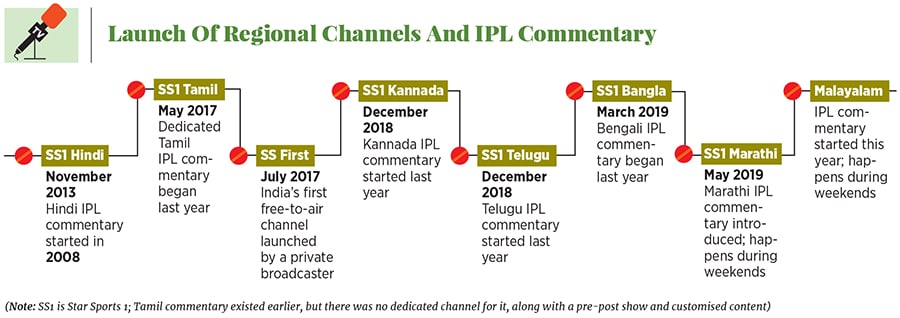
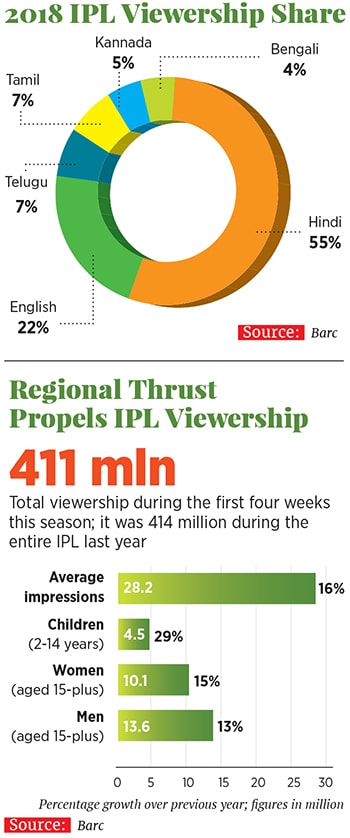
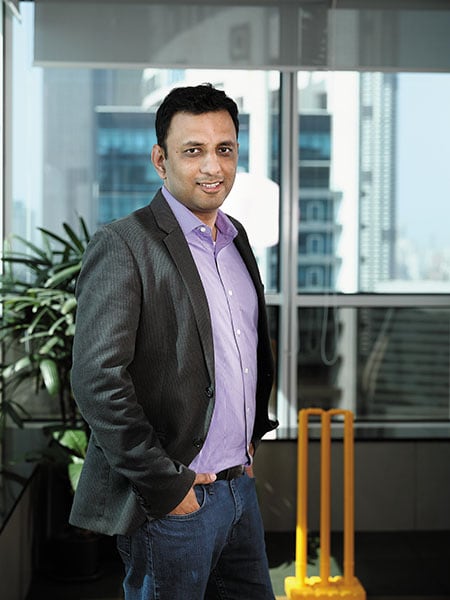 Gautam Thakar, chief executive officer of Star Sports
Gautam Thakar, chief executive officer of Star Sports